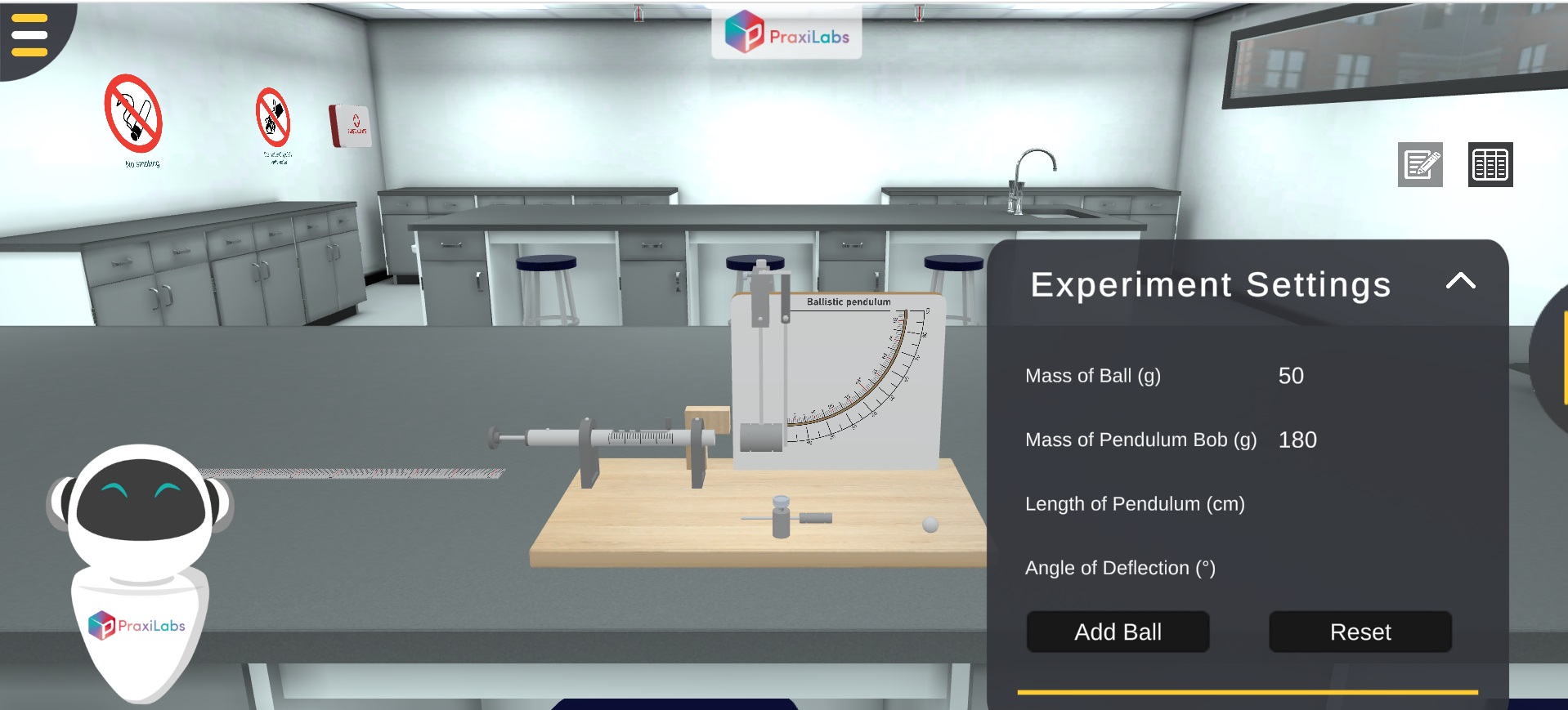





2.5M+
Active Users Worldwide
80%
Improved Learning Retention
60%
Reduction in Laboratory Costs
Determine the initial velocity of the projectile ball in three ranges (short, medium, and long-range) through ballistic pendulum lab simulation.
Inelastic collision and conversion kinetic energy to potential energy.
By the end of the Ballistic Pendulum Simulation, the student should be able to:
The collision has two types that are elastic collision and inelastic collision.
An elastic collision is a collision in which there is no net loss in kinetic energy in the system as a result of the collision.
Both momentum and kinetic energy are conserved quantities.
An inelastic collision is a collision in which there is a loss of kinetic energy. While the momentum of the system is conserved in an inelastic collision, kinetic energy is not.
This is because some kinetic energy had been transferred to something else. Thermal energy, sound energy…..etc.
The ballistic pendulum is a classic example of an inelastic collision in which conservation of momentum can be used for analysis, but conservation of energy during the collision cannot be invoked because the energy goes into inaccessible forms such as internal energy.
In a perfectly inelastic collision, a ball is fired with velocity ဎ0 into the stationary pendulum, which captures the ball and absorbs its energy.
The stationary pendulum now moves with a new velocity ဎ just after the collision in the ballistic pendulum lab.
By measuring the angle of deflection, we can calculate the height of the pendulum's swing h through ballistic pendulum simulation. Because the momentum of the system is conserved, we can calculate the initial velocity as a function in compound (pendulum and ball) velocity.
In ballistic pendulum simulation, using conservation of energy simulation to get the initial velocity as a function in the angle of deflection.




